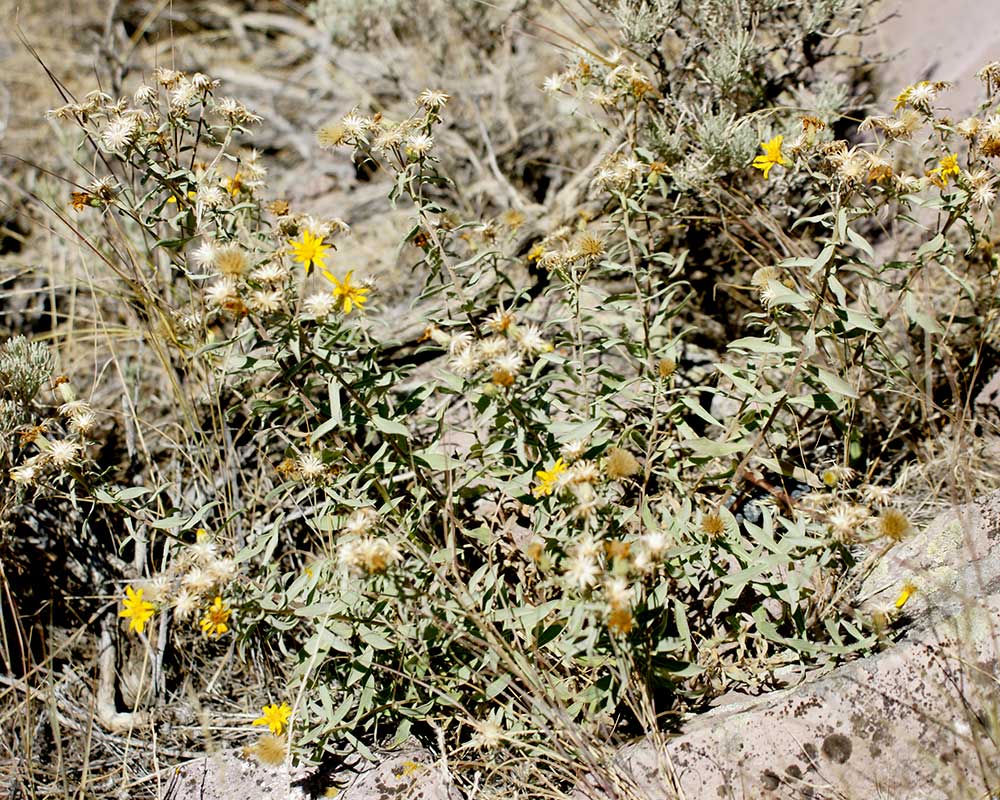Heterotheca villosa / hairy goldenaster
- yellow composite with 10-20 ray florets, orange-brown disk
- hairy leaves and stems
- blooms throughout season, often densely
- disturbed and challenging habitats
Let me start by saying that hairy goldenaster is perhaps more easily identified in the field than described in the laboratory. It’s bad enough that it’s a yellow aster, but the genus itself is noted for being a mess. Sorry, I mean, it’s noted for its immense range of variability at all levels. And when it comes right down to what “that kind of botanist” calls it, the 9 or so varieties are defined primarily by the density and shape of hairs and the shape of the leaves.
So forget the varieties for now. Hairy goldenaster is a low shrubby plant, up to maybe 20 inches tall and up to several feet in diameter. It is perennial, growing from a tap root. The leaves are short (up to about 1″ long) and may (or may not) be quite hairy. They vary from light green to dark green to olive to sage green, and unlike most DYCs, have a strong, pleasant, spicy aroma. They are narrow and lance shaped with wavy edges (often), and are often widest towards the tip. Pronounced color variations happen in plants growing side by side. Stem and involucre bracts are also rough and hairy. The basal leaves often persist green through the winter and begin growing again the spring.
In spring and mid-summer, hairy goldenaster produces copious, eye-catching clusters of small, bright-yellow—yea golden—flowers. This display can last through the fall, gradually petering out as the weather turns. Individual flower heads are about 1″ across with 10-20 yellow ray florets. Disk florets are orange-brown. The heads are arranged in branched arrays (corymbs). The receptacles (the bit below the blossom) are naked, i.e. lacking scales, awns, bristles or hairs.
Hairy goldenaster self-seeds and spreads extensively that way. It grows in semi-deserts, foothills and montane areas, in openings and disturbed areas (vacant lots, farmyards, roadsides). And crevices and lava flows, as at Craters of the Moon. Or in the geyser field by Old Faithful. It is drought tolerant which aids in its colonization efforts as does its very long flowering season.
| Color | |
|---|---|
| Family | |
| Blossom size | |
| Inflorescence size | |
| Inflorescence type | |
| When? | |
| Where? |


